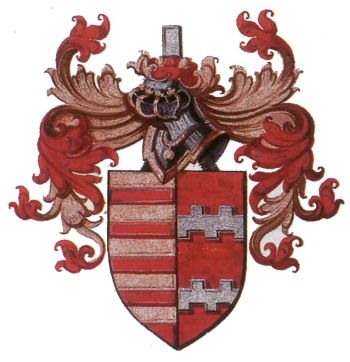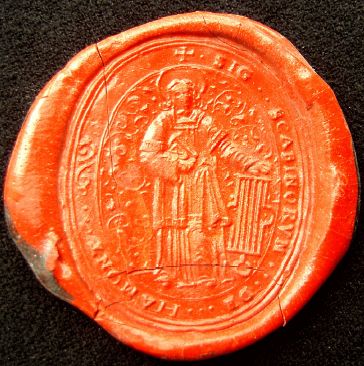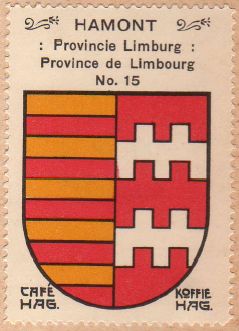Hamont: Difference between revisions
Knorrepoes (talk | contribs) m (Text replace - "'''Origin/meaning :'''<br/> The" to "====Origin/meaning==== The") |
Knorrepoes (talk | contribs) m (Text replace - "[[Literature" to "{{media}} [[Literature") |
||
| Line 23: | Line 23: | ||
|align="center"|[[File:hamont.hagbe.jpg|center]] <br/>The arms in the [[Koffie Hag Belgium|Koffie Hag/Café Hag albums]] +/- 1930 | |align="center"|[[File:hamont.hagbe.jpg|center]] <br/>The arms in the [[Koffie Hag Belgium|Koffie Hag/Café Hag albums]] +/- 1930 | ||
|} | |} | ||
{{media}} | |||
[[Literature]] : Servais, 1955 | [[Literature]] : Servais, 1955 | ||
Revision as of 22:33, 8 July 2014
| Heraldry of the World Civic heraldry of Belgium - Belgische Overheidswapens / Armorial de Belgique |
HAMONT
Province : Limburg
Incorporated into : 1976 Hamont-Achel
Origin/meaning
The arms were officially granted on March 22, 1920.
Hamont historically was part of the Grevenbroek Estate, which until the end of the 14th century was ruled by the Lords of Grevenbroek, a branch of the Arkel family. In 1401 Jan van Beieren, Prince-Elect of Liège conquered the town and added the estate to the County Loon.
The local council used a seal with the local patron saint, St. Lawrence. However, another seal from Hamont is known from 1767 with the arms shown above. The arms are a combination of the arms of Loon (red and golden bars) and the arms of Arkel. The crest shows a battlement, the origin thereof is not known. In 1920 is twas decided to use this combination as arms for the city and not St. Lawrence.
| The old seal of the council |
The arms in the Koffie Hag/Café Hag albums +/- 1930 |
Contact and Support
Partners:
Your logo here ?
Contact us
© since 1995, Heraldry of the World, Ralf Hartemink 
Index of the site
Literature : Servais, 1955













